Resident Evil 4 looks strong, but Capcom’s own Resident Evil 2 Remake will never be bettered
Re: remake
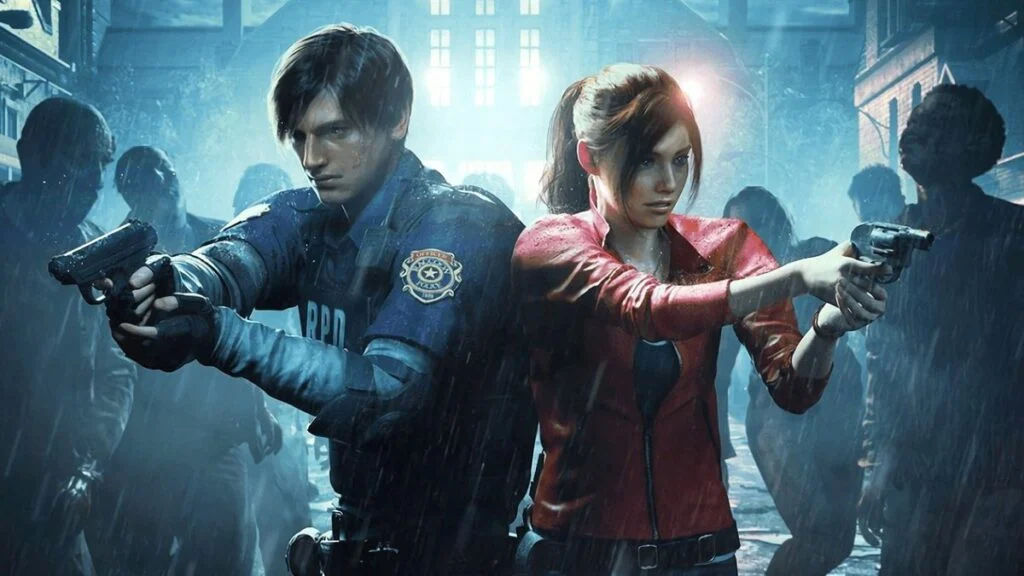
Capcom’s ruthlessly efficient remake conveyor belt has now processed four entire Resident Evils, injected them full of modernity, and sent them out for a new audience of terrorized herb enthusiasts to enjoy.
Since the first Resident Evil arrived in remastered form in 2015 – technically a re-remaster since it’s based on the 2002 Gamecube remake of the 1996 original – the practice of updating classic games for new hardware has boomed. Thanks to Night Dive, we’ve got Quake working in flawless online co-op. Final Fantasy VII is now a GPU-melting 3D RPG, and it’s three games now, not one. Even Tony Hawk’s Pro Skater, the distilled essence of baggy trousered nineties-ness, has made the successful quantum leap back to contemporary relevance thanks to a 2020 remaster.
But there’s one title in this field that can’t be touched. A one-off, unrepeatable masterwork. An alien, visiting from a distant planet where you can just transmit thoughts and feelings directly into a game engine, and a perfectly formed experience pops out: 2019’s Resident Evil 2 remake.
Ordinarily, a remake makes you think about what you actually want it to be while you’re playing it. There’s no consensus. Black Mesa translates the basic plotting, locations, and most of the set-pieces from the original Half-Life into Source Engine, but plays increasingly fast and loose with the details as time goes on. It feels spiritually connected, but certainly not a like-for-like remake. Night Dive’s Quake, on the other hand, is exactly that. Every bubonic rat run of id Software’s original design, every pixel on the color palette from brown to greenish brown is intact – it’s just updated to work better on modern machines and to look a bit smoother. It looks and plays exactly how you remember it, with your fallible, rose-tinted memory, and it sweeps all the clumsy stuff into the moat out of sight.
What's in a remake?
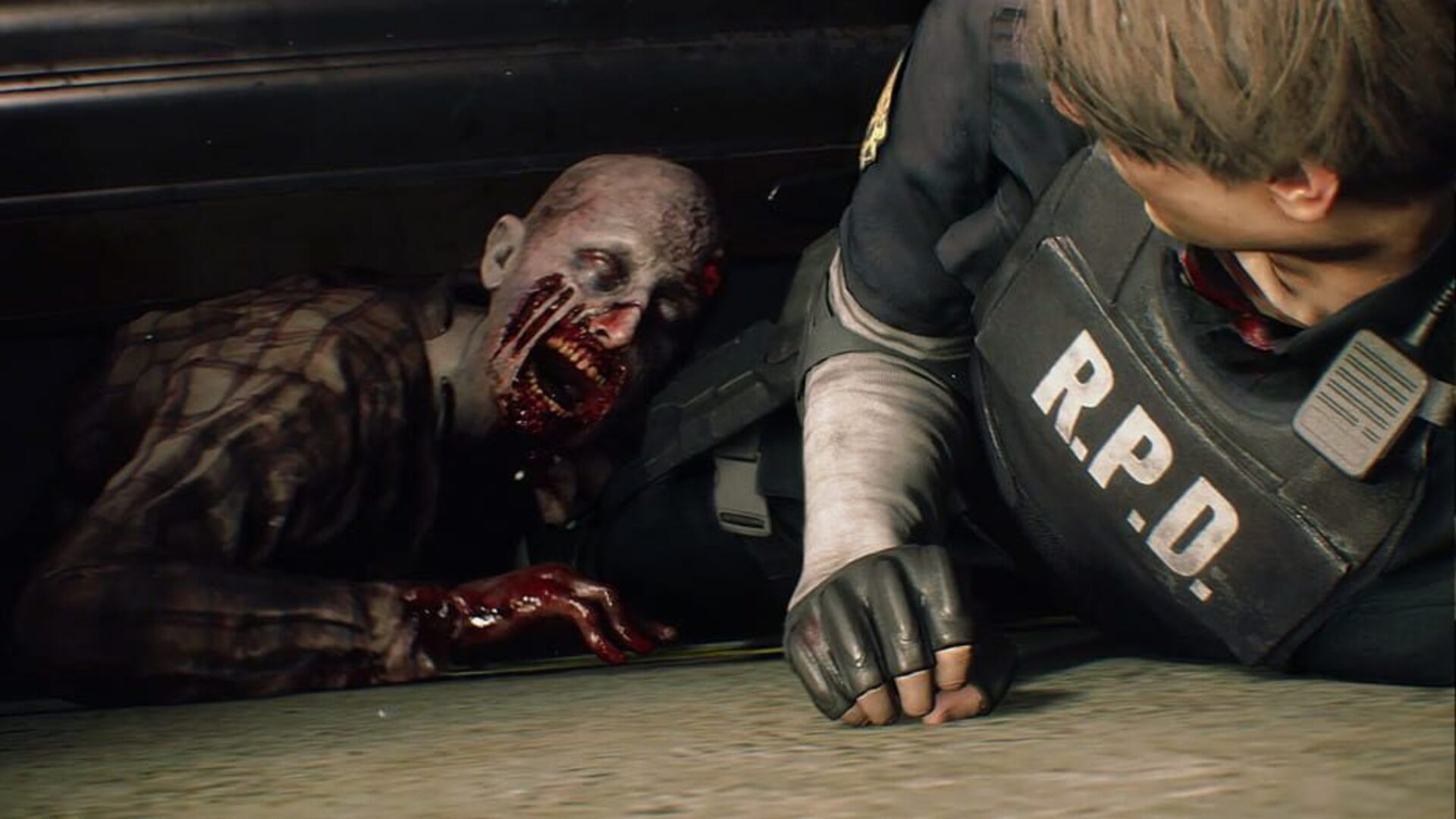
Both remakes are excellent, of course. And both interpret the role of a videogame modernization entirely differently. So internal critiquing should happen whenever you enter a newly refurbished digital realm. What decisions are you noticing on the creators’ part, and how do you feel about them? But not with Resident Evil 2.
No, in Resident Evil 2’s remake you simply sit there in stunned awe while some sacred and magical piece of your childhood is made material. It’s a feeling you usually only get in dreams, when suddenly you’re conversing with the TV character or you’re actually, at long last, standing inside Jurassic Park. If you’ll forgive an over-used phrase, Resident Evil 2’s remake really captures the spirit of the game.
Resident Evil 2 was infamous for its fixed camera angles and ‘tank’ controls
It’s a clumsy statement, that. But if there’s a more precise way to describe how a game’s visuals, art direction, sound effects, score and mechanical feel all come together, framed in the context of the pop culture when it arrived, I don’t know it.
Sign up for breaking news, reviews, opinion, top tech deals, and more.
What’s impressive, from a Resident Evil fan’s standpoint, is how much Capcom changed in the 2019 version without raising an eyebrow. Resident Evil 2 was infamous for its fixed camera angles and ‘tank’ controls, which conspired together to turn the most straightforward walk down a corridor into something akin to mid-bungee jump keyhole surgery. It seems like a small point – the controls were slow, and the camera perspective played with your depth perception sometimes, so what? – but it’s not. The whole game operated at the speed those two elements dictated.
A better class of zombie
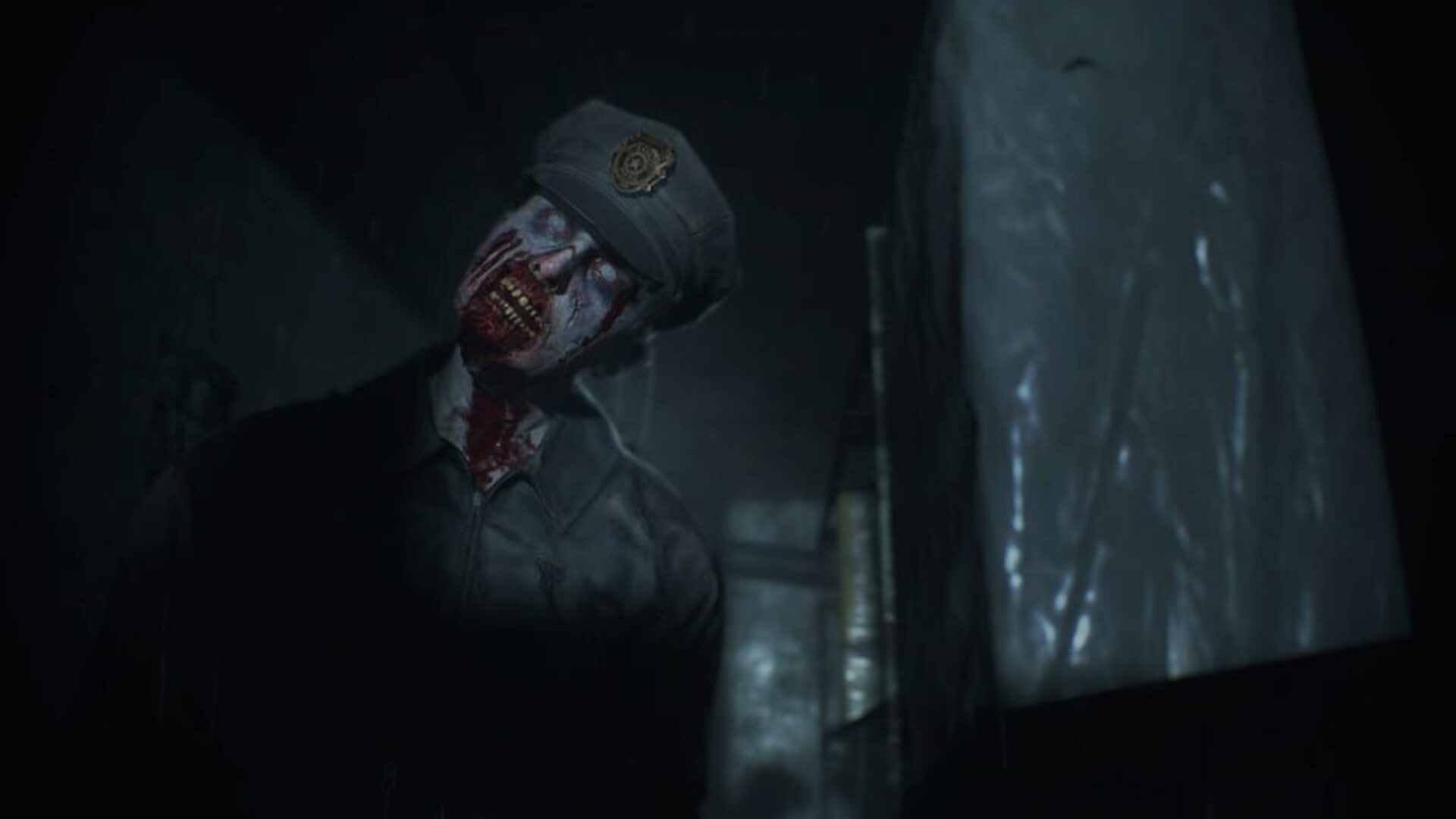
Zombies in 1997’s Resident Evil 2 are slow, lumbering things. It takes them ages to close the gap between themselves and Leon’s delicious meat-body, which works great, because it also takes Leon ages to face them, aim his pistol, and fire.
The camera perspective and the controls are both totally reworked in the 2019 remake. The former climbs down from the arty angles in the corners of high-ceilinged rooms and follows you over the shoulder, and the latter works like any contemporary third-person shooter. So the zombies have to change their behavior in kind. If they moved at the same speed they did back in ‘97, the Resident Evil 2 remake would be the easiest videogame in history. You’d just stand there and shoot every undead enemy in blasé fashion because you’d have about 7.5 hours to pop off that headshot before they got close. It’s simply easier to move, and easier to aim. Ergo, the zombies have to get tougher.
The shooting of, and evading from, zombies is a central tenet
These are really fundamental aspects to the game. It’s a survival horror, after all. The shooting of, and evading from, zombies is a central tenet. It’s completely changed in the remake, yet feels like the same experience we shot through all those years ago. How else can you explain that, other than in woolly terms like spirit?
Then there’s Mr X. In the original, he turned up to absolutely ruin your subsequent night’s sleep only at predetermined key moments. But in the 2019 version, Capcom treats him like Nemesis from Resident Evil 3. Once he makes his entrance, you feel pursued by him for the rest of the game. There are only a few locations where you know you’re safe from another appearance from that trenchcoat.
It’s another seismic design shift, and one that should completely change the atmosphere of the game. While I wouldn’t go as far as to say it’s addictive, it’s still impressive that the creators can implement such a massive change without us all proclaiming that our childhoods have been ruined forever and ever.

Somehow that skill for making significant changes without disturbing the sense of Resident Evil 2-ness, from the absurd puzzles to the stop-everything-and-crap-yourself encounters with Lickers, runs through every inch of Racoon City PD, the sewers, and even the greatly expanded NEST lab. In this final third of the game, the environment has been changed massively and the enemies too, including Plant 43 replacing Plant 42. There are opportunities for indignation all over the place, but we never feel like taking them, because this feels like the most intuitive way to update the intention and vision of that masterful original work, in every direction you look.
The first victim of Resident Evil 2’s excellence was 2020’s Resident Evil 3 remake. It was like trying to walk onto the stage after Jimi Hendrix’ Woodstock 1969 performance, or playing power forward for the Cavaliers the year after LeBron got traded. It hardly mattered that Resident Evil 3 wasn’t as good as Resident Evil 2 in the first place, or that the remake did actually lack the mechanical depth and complexity needed to feel like a genuinely modern game. It wouldn’t have mattered; we’d still have been disappointed.
A cabal of necromancers
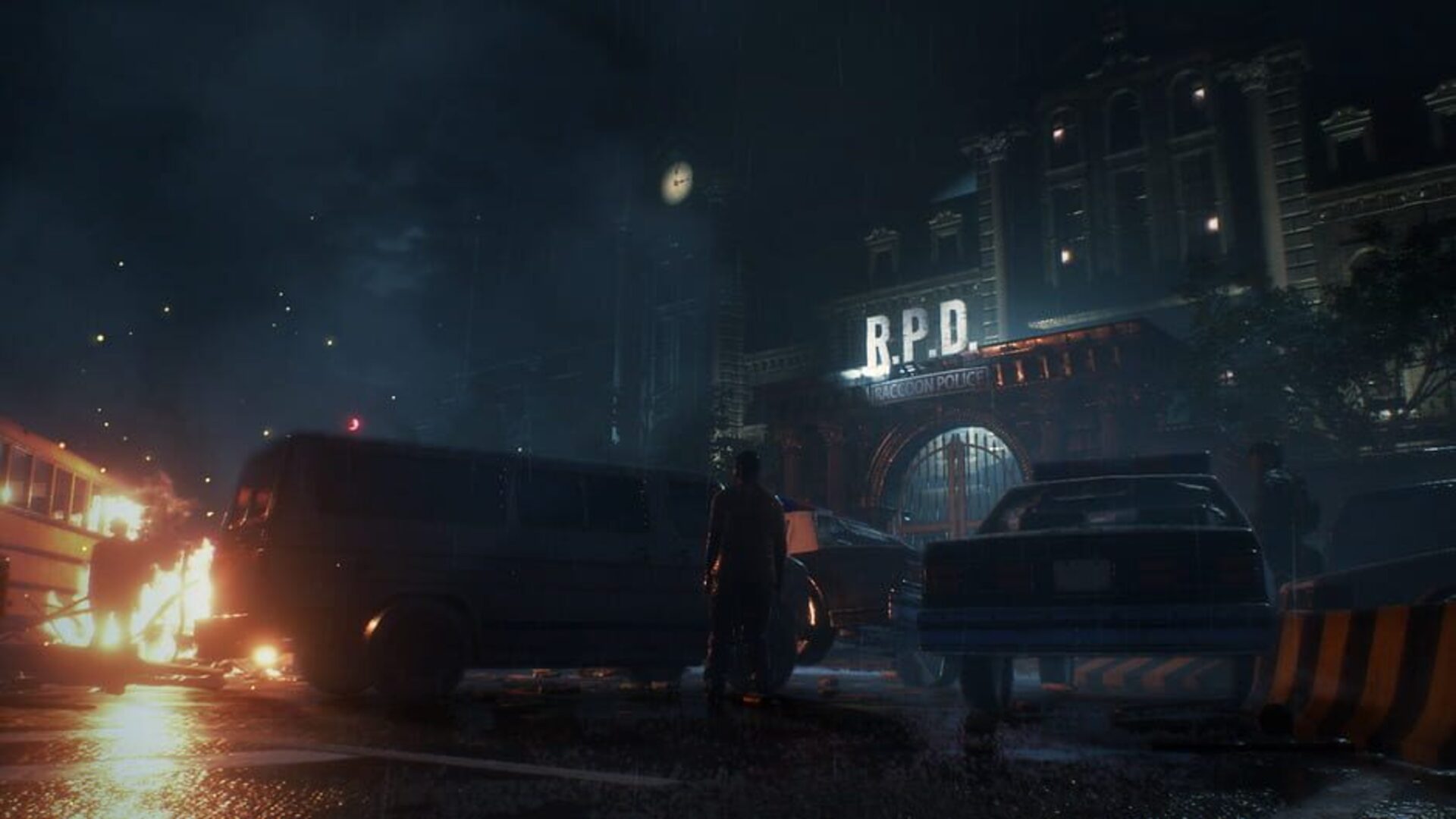
Resident Evil 4 stands a better chance. For starters, there’s a large and passionate section of the community who’d die in the hill that Resident Evil 4 is the best game in the series. It's got the same frequency of iconic moments that Resident Evil 2 has. The bag-head chainsaw man. The Regenerators. The jet ski escape. Shooting the water and realizing why they warned you not to shoot the water. That all puts it in good stead.
Lessons have surely been learned from the reception to the Resident Evil 3 remake in 2020, too. One wouldn’t like to read too much into the release dates of each game, but the year between Resident Evil 2 and Resident Evil 3 and the three years between Resident Evil 3 and Resident Evil 4 feel significant, in their own way.
We can take a few things for granted by now: lavish production values, graphical quality that makes you want to take a new screenshot every two paces, satisfyingly bobbing hair on Leon’s evergreen bonce. But what we can never predict, from Capcom or anyone else concerned with the dark art of videogame necromancy, is whether the new creators will successfully pinpoint and synthesize the spirit that made us love the original.
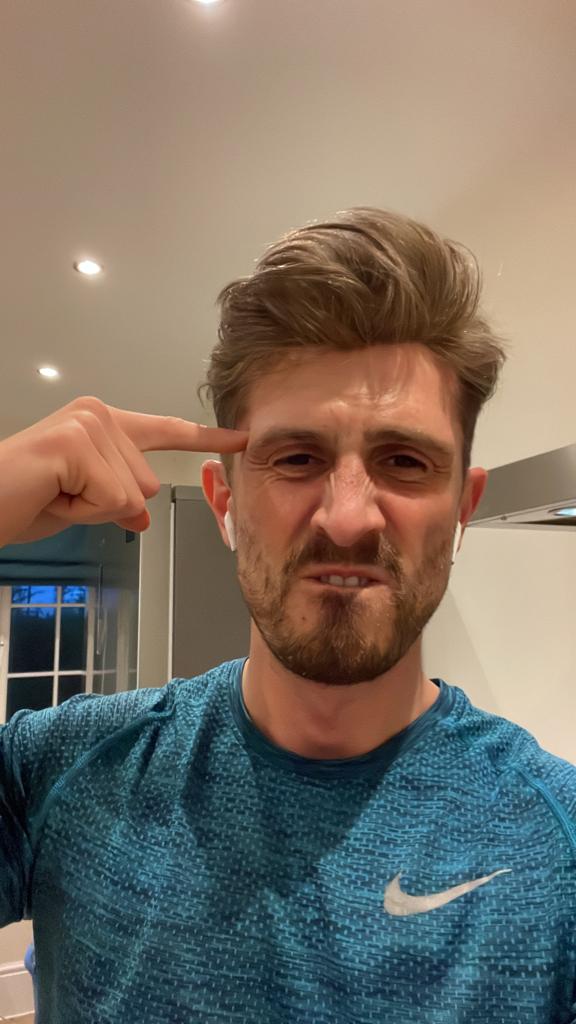
Ad creative by day, wandering mystic of 90s gaming folklore by moonlight, freelance contributor Phil started writing about games during the late Byzantine Empire era. Since then he’s picked up bylines for The Guardian, Rolling Stone, IGN, USA Today, Eurogamer, PC Gamer, VG247, Edge, Gazetta Dello Sport, Computerbild, Rock Paper Shotgun, Official PlayStation Magazine, Official Xbox Magaine, CVG, Games Master, TrustedReviews, Green Man Gaming, and a few others but he doesn’t want to bore you with too many. Won a GMA once.